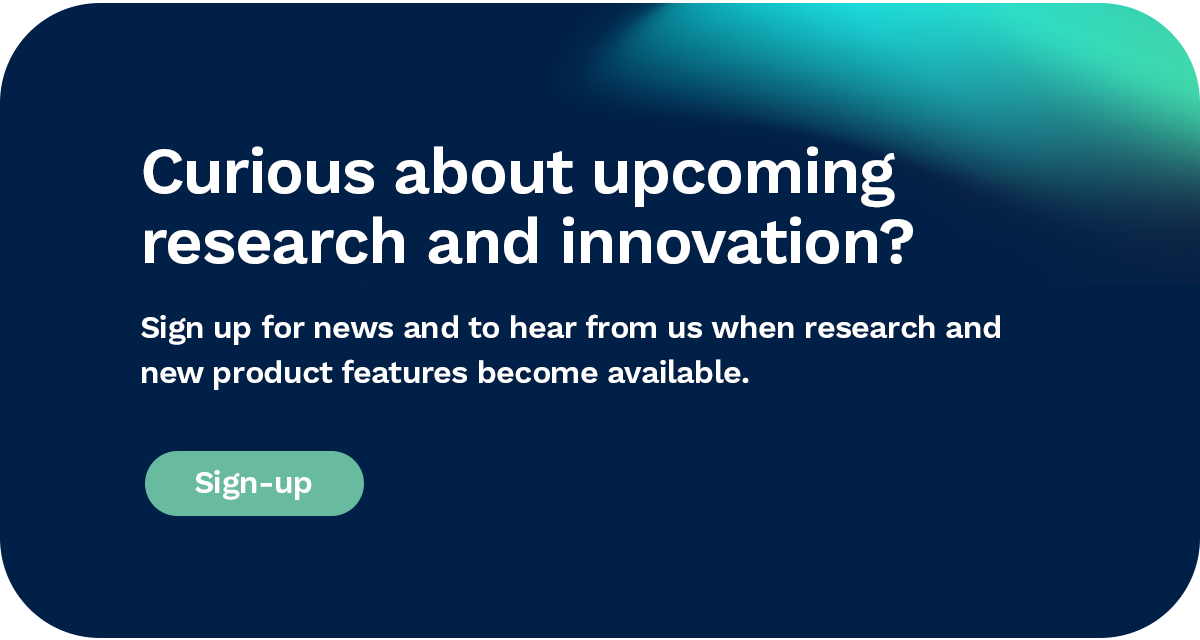
|
Dr Ross Upton CEO and Founder, Ultromics.
Andrew Reeve Chief Commercial Officer, Ultromics. |
Utilizing AI to predict heart failure and improve detection rates has shown to remove variability and increase positive patient outcomes. [1] This innovative technology is new to many clinicians and practitioners, which is why we at Ultromics have published a webinar to answer some frequently asked questions.
This article will highlight a few of the key takeaways from the webinar, which features an interview with Ultromics founder and CEO Ross Upton.
Read more: Responsible AI in Cardiac Imaging
1. How and why was Ultromics founded?
While training in cardiac ultrasound, Ross identified certain limitations that inspired him to look deeper into improving heart failure detection by reducing variability in reporting.
“The limitations [in cardiac ultrasound] that I perceived when I was training were mainly around interpretation and the analysis, as well as the variability,” Ross says. “I think it was very difficult training when you’d get cardiologists and clinicians telling you that the same patients had different diseases via their different interpretations of the echocardiogram, which was largely qualitative.”
He knew that innovative and robust technology would be necessary to improve reporting and answer to these limitations. This became Ross’ new goal and his inspiration to return to academia, get his PhD, and found Ultromics.
“We had a massive database in Oxford of images that we continually added to[...]and instead of building a system that was as good as a cardiographer interpretation or a sonographer taking measurements, I wanted to build the AI stack to be predictive and correlative to patient outcomes.”
2. What does Ultromics do, and how does it support better Heart Failure detection?
Our FDA-approved platform, EchoGo, uses the power of AI to automate key measurements for echocardiography; the most widely-used modality used to detect and manage heart disease and heart failure. The technology can be connected to any care setting, to provide zero-variability reports that all healthcare professionals can use to deliver high quality echo interpretation.
“We have collected 10 years' of outcomes data,” Ross continues. “Every product that we have built and cleared as part of Ultromics has had that infrastructure behind it. Every single AI algorithm developed was correlated toward patient's known outcomes.”
EchoGo is a culmination of these outcomes. It’s an AI stack that labels and processes ultrasound images, contours, tracks the heart cycle, and produces accurate measurements that help risk stratify cardiovascular disease.
“The technology is connected to institutions by cloud. [After an echocardiogram scan], Images are automatically sent to EchoGo where they are processed and reports are sent back to the providers. We operate in a HIPAA-secure environment with minimal disruption, sonographers don’t have to do anything, and importantly you get this risk stratification piece on top of the basic measurements made for quantification of echo.”
3. Why is global longitudinal strain so important for heart failure detection?
Ross states that strain, “is the canary in the mine when it comes to cardiovascular disease. It has this ability to predict adverse outcomes, like heart failure, before you can visually see it, or detect it via ejection fraction.”
Alongside prediction of cardiotoxicity, global longitudinal strain (GLS) is especially important in patients with Left Ventricular Ejection Fraction (LVEF), who don’t usually show the trademark signs for heart failure. Detecting these traits through global longitudinal strain helps health practitioners pinpoint which patients are going down the path towards heart failure.
“I’d argue that [GLS] is one of the most important measures to be made from an echocardiogram,” Ross notes. “The more cardiologists we speak to, the more and more they’re saying that cardiac strain is really important to measure on all different cohorts of patients.”
4. What sets EchoGo apart from other tools practitioners might use?
Firstly, EchoGo is fully automated. This was one of Ultromics’ core goals. “There is no adjusting of the contours, there’s none of that manual intervention that’s required as part of this process,” Ross says. “That’s key because in some of our studies, we’ve seen that even enabling the adjustment of a contour can go from making measurements significant and correlated to patient outcomes to [uncorrelated].”
Patient outcomes are another way EchoGo sets itself apart from other tools. Ross notes, “I don’t know any other company that has based their entire AI stack against patient outcomes in this space.”
Finally, Ross points out that Ultromics is not a company limited to automated measurements. “The measurements we produce here are for risk stratification and detection of disease, and we go beyond that. We have other cleared products which do the prediction of disease and detection of disease, and we’re looking at others beyond that[...] We’re really patient outcomes-focused.”
EchoGo has been trialed internationally, and in each case, it has shown that GLS and ejection fraction measurements are significantly more correlated to patient outcomes. [1]
5. Who do you think benefits from EchoGo the most and why?
“Patients number one,” Ross says. “That’s always our first and foremost concern at Ultromics, that’s why we started the company. I think for patients, the outcome improvements are going to be very meaningful, and I think that’s the most important beneficiary here.”
Cardiologists will also greatly benefit from an improved stratification toolbox. “It’s easy to make a valve measurement as a cardiologist and a sonographer,” Ross says. “It’s very easy to see if a patient has valve disease, it’s very easy to see if a patient has left ventricular hypertrophy. What’s difficult is knowing when those things are going to become a problem.”
Having EchoGo’s AI algorithms makes this task much easier for cardiologists. It gives them more confidence in their diagnosis, risk stratification, and intervention decisions.
As a former sonographer, Ross highlighted how important EchoGo’s AI technology is to a sonographer’s day-to-day work. Adding new, low-variability measurements within time constraints while avoiding patient backlog is “an almost impossible task,” he says. “Sonographers are already overworked, so I think [they] are going to benefit greatly from the technology.”
Less experienced individuals in primary care and emergency departments are also beginning to use ultrasound technology. “When you have that, you have a bigger need for… algorithmic interpretation and risk stratification of the ultrasounds.”
As Ultromics has always been focused on the importance of outcomes, Ross makes a point near the end of the webinar that, “we’re going to continue to build out our risk stratification and disease detection packages.”
Learn the full story behind EchoGo
These questions and answers were only a fraction of the information Ross shared during the ‘Using AI to Improve Heart Failure Prediction and Detection’ webinar. Click here to watch the full webinar and discover more about how EchoGo is revolutionizing cardiovascular care.
References:
Karagodin I, Carvalho Singulane C, Woodward GM, et al. Echocardiographic Correlates of In-Hospital Death in Patients with Acute COVID-19 Infection: The World Alliance Societies of Echocardiography (WASE-COVID) Study. Journal of the American Society of Echocardiography. 2021;34:819–30.


